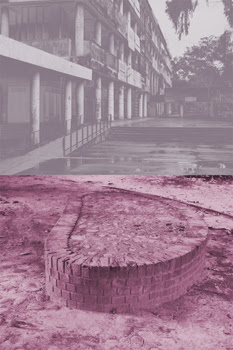Submitted by WA Contents
Gavin Hipkins: Leisure Valley
United Kingdom Architecture News - Mar 17, 2014 - 18:36 2878 views

Gavin Hipkins, Leisure Valley (detail), 2014. Pigment print on newsprint, 120 x 80 cm. Courtesy of the artist and Starkwhite, Auckland.
Gavin Hipkins, Leisure Valley, 4 April - 17 May 2014
ST PAUL St Galleries One and Two
For Leisure Valley Gavin Hipkins has revisited the city of Chandigarh in Northern India. Hipkins first visited Chandigarh in 1997 and the subsequent work The Trench was initially shown at The Physics Room in Christchurch in 1998. Chandigarh was the first planned city in post-Partition India and was designed by a team of architects led by Le Corbusier. The city’s foundation stone was laid in 1952. The Trench focused on Le Corbusier’s Open Hand Monument. In 2013 Hipkins returned to the city to take photographs for his new photo-installation Leisure Valley.
As a modernist project Chandigarh represents desires for community organisation expressed through architecture and urban planning. For Leisure Valley Hipkins’ recent images of Chandigarh play with the utopic desires of modernist planning and mimic the romantic appreciation of the ruin through capturing aspects of present day Chandigarh that are in various states of decay. This compression or flattening of time periods is further complicated in the images by the absence of inhabitants.
Leisure Valley will also include a new experimental short film titled The Port. The Port combines images taken from the 18th century architectural astronomy instruments called Jantar Mantars in New Delhi and Jaipur. These structures are included alongside abstracted and naturalistic New Zealand landscape motifs, suburban architecture, and street scenes from Auckland's current master-planned community Stonefields — built on the site of former Winstones quarry at Mount Wellington. These images are combined with an audio montage read from passages of H.G. Wells’ 1895 science fiction novella The Time Machine. In the gallery space the sound and image play unsynchronized, their different duration causing an ever-changing relationship between the two.
The production of the work for Leisure Valley was generously supported by Elam School of Fine Arts, The National Institute of Creative Arts and Industries (NICAI), The University of Auckland.
> via stpaulst.aut.ac.nz
